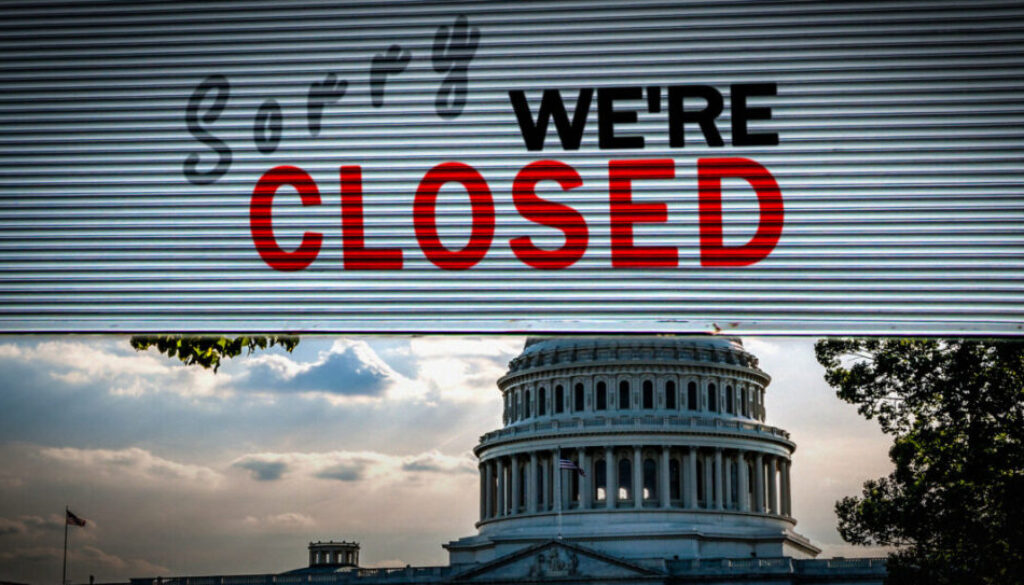Government shutdown brings volatility, caution – and investor angst

As Washington comes to a standstill once more, investors face a familiar but unsettling question: How should they approach the markets during a government shutdown?
The current standoff, focused on heated disagreements over federal health care policy and funding, has already closed non-essential operations, put workers on furlough, and shaken investor confidence. Still, history shows that markets react differently each time, with both risks and opportunities depending on where you look.
At the heart of the government shutdown is health care policy. Lawmakers are still divided over funding provisions tied to federal subsidies and Medicaid expansion. Hardline factions are pushing for deep cuts that will drive millions off ACA health policies and boost health care costs for many others, while others are insisting on protecting coverage. This battle has left no clear path forward, prolonging the shutdown and adding an unpredictable dimension to financial markets.
Investors uncertain; data dries up
For investors, the uncertainty of a government shutdown is compounded by the fact that agencies providing key economic data have gone dark. That absence clouds market expectations and forces trading desks to recalibrate their strategies while essentially flying blind.
“Beyond obvious macro risks, beware second-order effects as several economic releases (including Friday’s jobs report) could be delayed,” said Michael Ashley Schulman, Partner, and Chief Investment Officer at Running Point Capital Advisors.
With agencies shuttered, official readings on employment, manufacturing, and inflation will be delayed, leaving investors to rely on alternative sources: private payroll data from ADP, job-tracking firms like Homebase and Indeed, or manufacturing surveys from S&P Global. Even the Federal Reserve, Schulman noted, will be forced to lean on forecasts rather than fresh government data.
Government shutdown creates a volatile situation
The government shutdown vacuum creates volatility.
“Markets are already gaming that scenario, preparing to trade the fog as much as the fundamentals,” Schulman said.
Already, data from ADP suggest U.S. private sector employment lost 32,000 jobs in September, far off from the predictions of 50,000 new jobs following the loss of 3,000 in August.
“Despite strong economic growth we saw in the second quarter, this month’s release further validates what we’ve been seeing in the labor market; that U.S. employers have been cautious with hiring,” said ADP Chief Economist Nela Richardson.
The stock market, so far, has ho-hummed the news, with the Dow Jones Industrial average staying relatively flat in early trading on Wednesday.
Earlier shutdown experiences
Historically, markets have not materially changed by a shutdown. In 2013, the House and Senate fought over funding for the Affordable Care Act and shut down the government for 16 days. The S&P 500 wobbled a bit, but overall, the equity market took the news in stride.
“On average, the S&P 500 has historically been about flat during shutdowns, with a slightly higher probability of gains vs. losses since 1976,” said Jeff Buchbinder, Chief Equity Strategist for LPL Financial. “Considering that most of the losses came during the late 1970s, and the biggest decline during a shutdown since 1980 was 2.2%, history suggests stocks have a good chance of going higher during this shutdown, though past performance does not guarantee future results.”
For fixed-income investors, the shutdown usually increases uncertainty about interest rates. Without new data, the Fed is less likely to make substantial changes, which could support some rate strategies. Schulman notes that this environment favors holding event risk, paying attention to duration, and considering yield-curve steepeners if the Fed stays cautious without current information.
Opportunities for investors
This situation can create opportunities for investors who expect short-term mispricings in Treasuries or changes along the yield curve. However, it is important to stay cautious, since a long shutdown could damage consumer confidence and business outlooks, which may slow down growth.
In the equity market, shutdowns generally don’t derail long-term valuations but can change near-term tactics.
“In equities, it argues for lighter beta and more idiosyncratic pair trades, especially where tariffs and oil move the story,” Schulman said. In practice, that means investors may shy away from broad market exposure in favor of specific sectors or companies with clear catalysts.
For instance, health care stocks themselves may swing widely as policy debates unfold. Energy names could prove more resilient if OPEC+ headlines sway oil prices upward, offering a hedge against shutdown-induced uncertainty.
Past experience
Shutdowns tend to heighten caution in high-yield debt, where liquidity can dry up quickly, while leaving investment-grade credit more appealing as a safe carry trade.
“Credit probably stays cautious on high yield and more comfortable in investment grade carry,” Schulman explained.
Private markets, meanwhile, generally ride out short shutdowns with a slight change in valuations. Still, secondary sales may pop up if investors need fast liquidity. That could present niche opportunities for buyers willing to step in when sellers are motivated.
Currency markets often register a softening dollar during shutdown episodes, as global investors look to hedge uncertainty. At the same time, the partial closure of agencies like the Securities and Exchange Commission and the Commodity Futures Trading Commission slows capital-market activity.
IPOs on pause
“With the SEC and CFTC partly hamstrung, IPOs are on pause and some oversight slows at the margin,” Schulman noted. Should the shutdown drag on, offerings penciled in for later this year could get pushed into 2026.
Although the government shutdown does not stop all government work, with customs officers and law enforcement still on the job without pay, supply chains can still be affected. Training, audits, and FDA oversight may slow down, causing bottlenecks that impact industries depending on quick approvals.
“Still expect some possible supply-chain slowdowns because non-essential support staff get furloughed,” Schulman cautioned.
Resiliency, diversification may pay off
That creates another investment angle: Firms with strong supply-chain resilience or diversified sourcing may outperform peers more exposed to government-dependent processes.
Markets rarely collapse during government shutdowns, but the political standoff does have genuine costs. Consumer confidence can drop, federal workers may spend less, and companies often wait to make decisions until policies are clearer. For long-term investors, it is usually best to avoid quick reactions and instead look for opportunities that come from short-term uncertainty.
Every government shutdown is unique, but this one, caused by disagreements over health care funding, brings both risks and tactical opportunities for investors. From yield-curve strategies to targeted stock picks and a careful approach to credit, experienced investors are getting ready for a time when politics and perception may matter more than the usual fundamentals.
Shutdowns do not last forever, but for investors, they serve as a clear reminder that political challenges in Washington can have a real impact on the markets.
© Entire contents copyright 2025 by InsuranceNewsNet.com Inc. All rights reserved. No part of this article may be reprinted without the expressed written consent from InsuranceNewsNet.com.
The post Government shutdown brings volatility, caution – and investor angst appeared first on Insurance News | InsuranceNewsNet.





